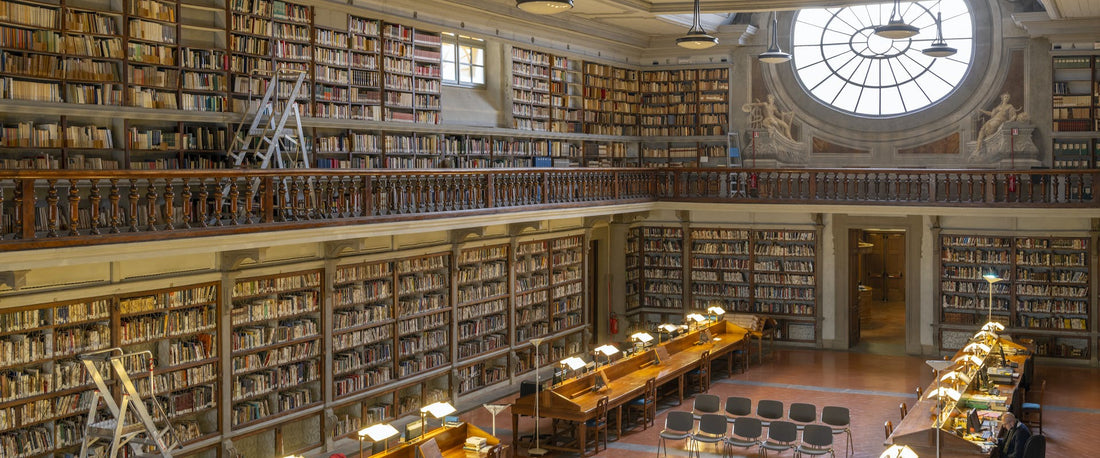Uffizi Gallery (Galleria degli Uffizi) is one of Italy’s most renowned museums – and a must-see destination while visiting Florence. Here are a few fun facts about the Uffizi Gallery that you may not know.
- The Uffizi Gallery Was Built to Store Documents: "Uffizi" means "offices" and the original purpose of the building was to store documents due to its late Renaissance design, which was specifically chosen because it included many-windowed rooms beneficial for document storage.
- Paintings were moved away during World War II: During WWII, paintings from the Uffizi Gallery were moved to various locations for safekeeping, including the Bossi Pucci Villa in Florence, the Medici Villa at Poggio a Caiano, and the Pitti Palace
-
It houses the "The Birth of Venus" which was the first painting in Tuscany to be painted on canvas and set a new standard with its size and its depiction of Venus's nudity was groundbreaking for its time
- It also houses a large collection of ancient Greek and Roman sculptures: Examples of these sculptures include the Medici Venus, an ancient Greek statue depicting the goddess of love, and a young Dionysus (also known as Bacchus) holding grapes in his hand.
- Secret Passage to Palazzo Pitti: The cortile of the Uffizi which was designed by Giorgio Vasari and its Vasari Corridor which connects Palazzo Vecchio to Palazzo Pitti.
- It houses the largest room for the civil power palace: The Gallery's "Hall of the Five Hundred" was once used for meetings for the Republic of Florence's government and is now one of the most famous rooms in the museum. It is famous for its ceiling paintings and is 54 meters long, 23 meters wide, and 18 meters high and also has a secret passage leading to the Studiolo di Francesco I.
- The Best Time to Visit Is Before Noon: Even though the museum officially opens at 8 am sharp, it tends to get really busy early in the morning. To avoid crowds, try visiting before noon when possible.
- How Big is Uffizi Gallery? It contains 101 rooms of artwork and it is as big as 13,000 sqm (139,000 sqft).
- There Are Over 1500 Works in the Collection: With works by legendary Italian painters such as Botticelli and Michelangelo, the collection contains more than 1,500 different pieces of art including paintings, sculptures, furniture, and tapestries.
- Uffizi Gallery has a Restoration Department that promotes and coordinates research, information, and development initiatives in the conservation and restoration fields: The laboratories of the Uffizi Gallery and the Opificio delle Pietre Dure are Italy's most distinguished institutions for restoration and conservation. Joseph Cannizzaro has designed a Drawing & Print Conservation Lab for the Uffizi Gallery, while Friends of the Uffizi Gallery have committed to raising funds to restore works of art in the museum.
- It has a Historical Archive and Research Department: It is responsible for cataloging the archives with the aim of protecting and understanding the historic and artistic heritage of the works
- It Was Designed by Giorgio Vasari: Giorgio Vasari was an influential Renaissance painter who created many pieces found inside the museum - but he's also credited with designing its unique layout. He helped turn this structure originally used as document storage into one of Florence’s premier cultural destinations.
- It Receives Nearly 2 Million Visitors Each Year: With around 2 million visitors each year, it’s no wonder why it is one of Florence’s star attractions. It can be crowded during peak season so plan your trip accordingly or consider purchasing a timed ticket online ahead of time if possible.
- Florence Was One Of The First Cities To Implement Museums In The World: The gallery was opened to the public as a museum in 1765 after the last member of the Medici family bequeathed the collection to the Grand Duchy of Tuscany. Florence was one of the first cities to implement public access to its collections. Since then public museums have grown internationally with thousands now existing around the world.
Are you one of those who are fascinated by the Leaning Tower of Pisa in Italy? Have you been wanting to learn more about this iconic structure and its history? We will explore some fascinating facts about the Leaning Tower of Pisa, from its construction to its famous tilt and beyond! Get ready to be amazed as we delve into the history and mystery behind this incredible Italian attraction.
Have you ever visited both Northern Italy and Southern Italy? Northern Italian and Southern Italian cultures vary dramatically in numerous aspects such as lifestyle, cuisine, and language. In this article, we will explore the major differences between the culture of Northern Italy compared to the culture of Southern Italy. We will look at their respective histories and examine how each region has developed its own rich traditions over time.




